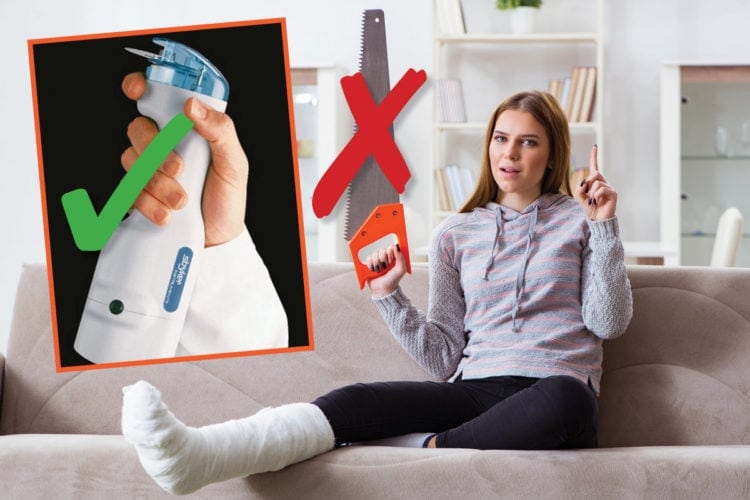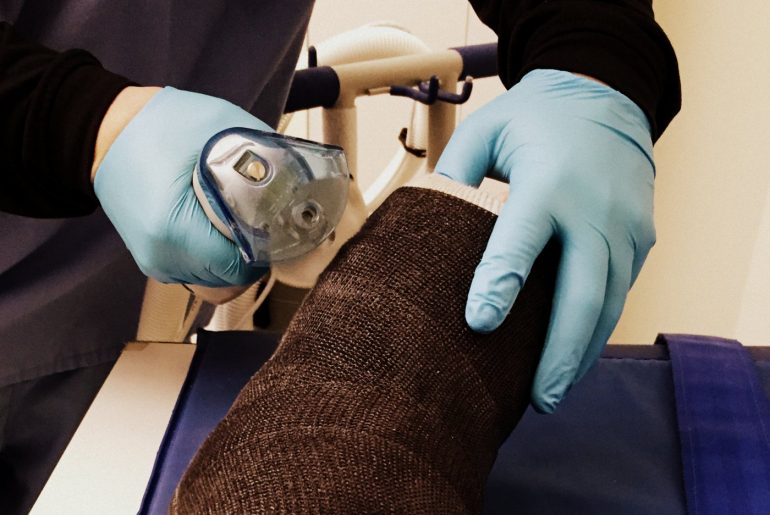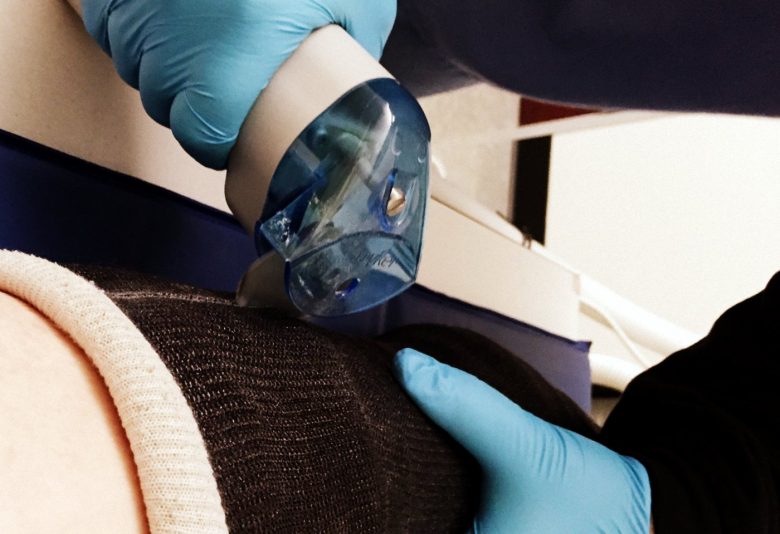It’s a saw. Powered by electricity. And they’re planning to use it on your arm or leg to cut off the cast that’s touching your skin.
How can this not end up a bloody disaster? In a word: resistance. And once you know the secret, you’ll hopefully be a little more relaxed when the whirring metal sawblade descends upon your body.
Resistance is not futile
The principle making it work is very similar to something you’ve noticed in everyday life: If you try to write on a piece of paper that doesn’t have something supporting it — like a table or clipboard — you won’t really be able to get very far. The paper will just bend and move, offering little resistance, and you won’t be able to write anything.
But once the page is rigid, your pen or pencil can produce enough friction to mark the paper.
The same general idea is in play with an oscillating cast saw. Since the sawblade only vibrates, and does not spin, skin is generally elastic and can withstand contact without being cut (with some rare exceptions). But the inflexible cast material — plaster or fiberglass — offers a lot of resistance, and the blade can do its job.

How a cast saw works: The downside
The resistance the cast gives the saw, however, can lead to one of the possible problems with cast-cutting: burns.
Because of the amount of friction generated (more so with fiberglass than with plaster), the person removing your cast needs to be careful. If not a physician, ideally, they have been fully trained and/or is a certified orthopedic cast technician.
Less problematic, hopefully, is the fact that the vibration from the saw feels strange — and can even tickle a bit.
The history of the cast saw
The cast saw (“Plaster cast cutter”) was first patented by Homer H Stryker in the 1940s, and the most common cast cutting saw used today still bears his name: Stryker.
In his patent application, the orthopedic surgeon wrote:
My improved implement is highly efficient in the cutting of casts or other hard substances but yielding surfaces or materials are not cut or injured thereby in the event the cutter should accidentally contact the skin of a person and it does not cut fabrics or other objects unless they are supported by a fairly rigid backing.
While it’s hard to imagine that cast removal technology hasn’t improved much in 70 years or so, sometimes simplicity is the purest form of genius.
But who knows? Maybe in a generation or two, laser cast removal will be the way to go.
Until then, research on ways to help fractures heal more quickly — from stem cell therapy to electrical bone stimulation — is ongoing. If we’re really lucky, we will one day be able to heal broken bones almost instantly, Hollywood-style.










